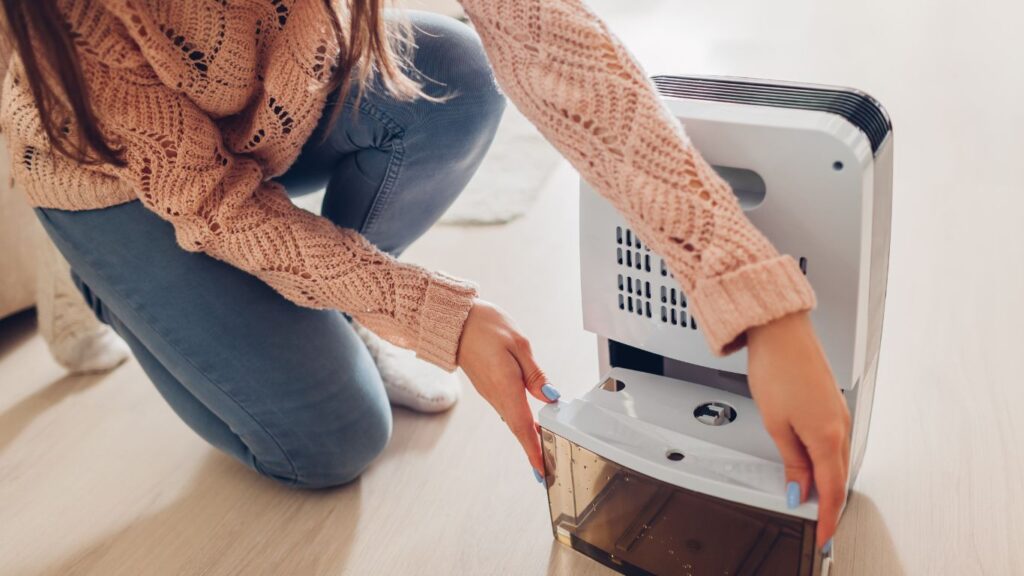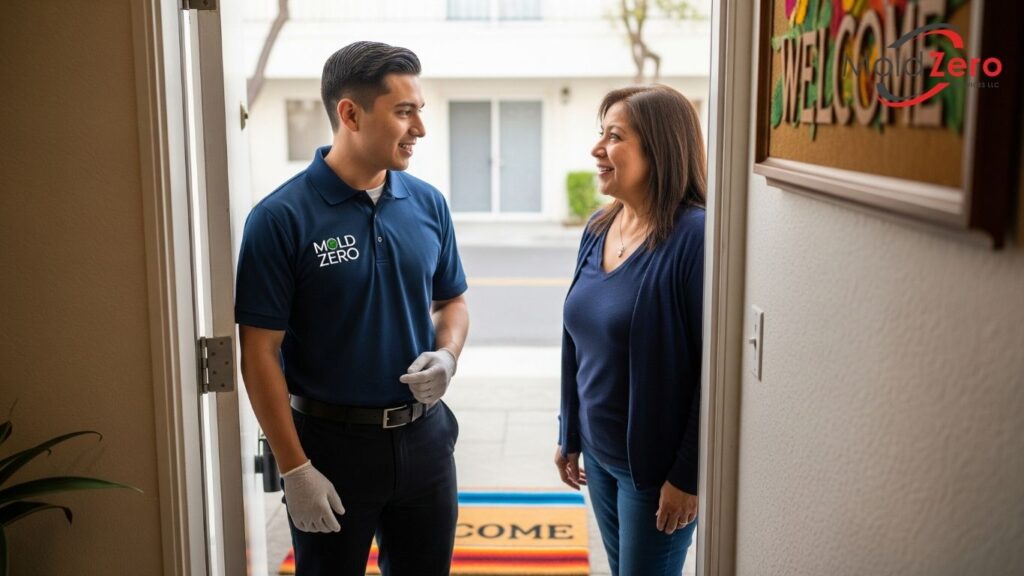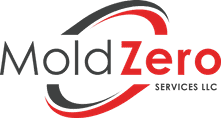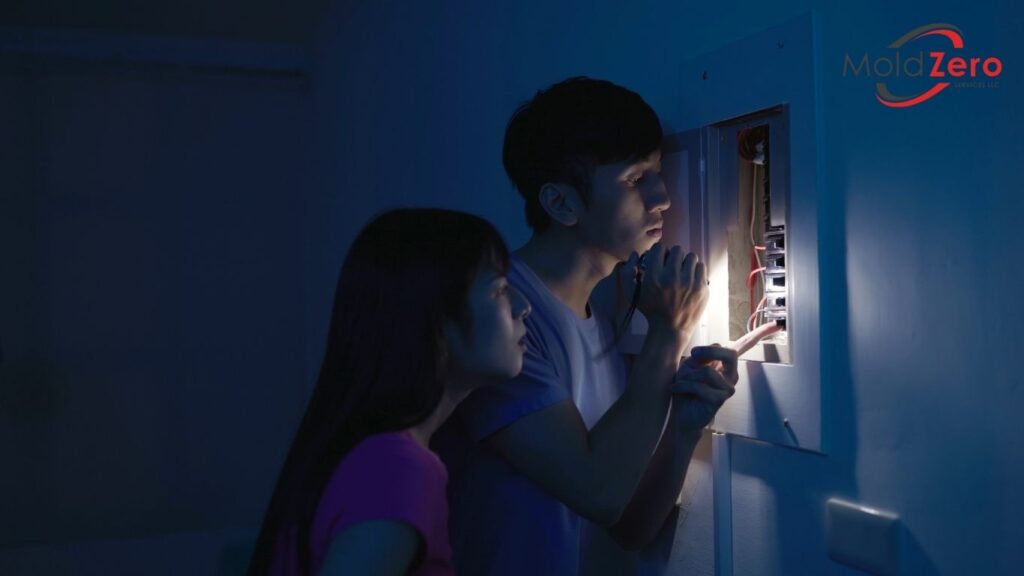5 Mold Prevention Steps To Take During a Power Outage
Power outages can be disruptive for many reasons. Beyond the immediate inconveniences like no lights or Wi-Fi, a lesser-known consequence for homeowners in Los Angeles can be an increased risk of mold growth. When the power goes out, your home’s climate control systems stop. This can lead to a rapid rise in humidity, creating the damp conditions mold loves, especially in warmer weather.
At Mold Zero, we want to help you protect your home even in unexpected situations. Taking quick, specific actions during a power outage can significantly reduce the chance of facing a costly mold problem down the line. Here are five crucial steps.
Why Power Outages Increase Mold Risk in Your Home
Understanding the “why” helps emphasize the “what to do.” During a power outage:
- Climate Control is Lost: Your air conditioning and any dehumidifiers stop working. This means indoor humidity can climb quickly.
- Air Circulation Ceases: Electric fans are off, leading to stagnant air that traps moisture.
- Appliance Issues Arise: Refrigerators and freezers begin to defrost, potentially releasing water. If the outage coincides with heavy rain and your sump pump is electric without a battery backup, you could face water intrusion in basements or crawl spaces.
- Drying Slows Down: Any existing dampness from recent showers, cooking, or cleaning will take much longer to dry without powered ventilation or AC.
These conditions create an inviting environment for mold spores to settle and grow.

5 Mold Prevention Steps During a Power Outage
Here’s what we recommend you do to minimize mold risk when the lights go out:
1. Maximize Natural Ventilation (When Safe)
If the weather conditions and home security allow, strategically open windows and doors to create cross-drafts. This natural ventilation can help move moist air out of your home.
- Why it helps: Moving air helps to lower humidity and discourage mold spores from settling.
- How to do it: Open windows on opposite sides of your home or rooms if possible. However, do not open windows if it’s raining heavily, if there’s a security risk, or if it introduces more humidity than it removes (e.g., during very hot, humid days without a breeze). Your safety and security come first.
2. Manage Refrigerator and Freezer Moisture
Your fridge and freezer will start to warm up during a prolonged outage.
- Why it helps: Keeping them closed minimizes cold loss and slows defrosting, which reduces the amount of condensation and potential meltwater.
- How to do it: Keep refrigerator and freezer doors closed as much as possible. If the outage is expected to last a while, you can place towels around the base of these appliances to absorb any condensation or water that might leak out as they defrost. Guidance from Ready.gov and FEMA on power outages often includes keeping these appliances closed to maintain temperature for food safety, which also helps manage moisture.
3. Actively Absorb Excess Moisture
Be proactive in managing any noticeable dampness.
- Why it helps: Removing standing moisture denies mold a critical ingredient for growth.
- How to do it: Use towels to wipe down any condensation that forms on windows, cool pipes, or other surfaces. If you have battery-operated fans, directing them at damp areas can also help after wiping. In particularly humid areas like basements or bathrooms, if you have safe, non-electric moisture-absorbing products (like large desiccant packs – ensuring they are out of reach of pets and children), consider deploying them.
4. Isolate Known Damp Areas (If Practical)
If a specific area is significantly more humid or damp than the rest of the house, try to contain that moisture.
- Why it helps: This can prevent highly concentrated moist air from spreading to other parts of your home.
- How to do it: For instance, if a bathroom is very steamy from recent use and you cannot ventilate it directly due to weather, keeping its door closed might help contain that humidity, especially if other areas of the home are less humid. Similarly, try to contain any minor, known leaks if they become more apparent during the outage.
5. Monitor for and Address Any Water Intrusion
If the power outage is caused by a storm, your home might be vulnerable to new water entry.
- Why it helps: Catching and addressing new leaks immediately can prevent significant water damage and subsequent mold.
- How to do it: Be vigilant for any signs of new water leaks – check around windows, doors, the roofline (for ceiling stains), and in the basement or crawl space. If your sump pump has a battery backup, confirm it’s operational. If water is entering and you don’t have a working sump pump, you may need to manually remove water if it’s safe and feasible (e.g., bailing water from a window well or a basement low point).
After the Power Returns: Your Next Mold Prevention Steps
Once electricity is restored to your home:
- Thoroughly Ventilate: Open windows (if weather permits) and use electric fans to air out your home completely.
- Run Dehumidifiers & AC: Actively use your dehumidifiers and air conditioning to bring indoor humidity levels back down to the optimal range (ideally 30-50%).
- Inspect Your Home: Carefully check for any signs of moisture accumulation, damp spots, or new water damage that might have occurred during the outage. Pay attention to musty odors.
- Check Appliances: Ensure your refrigerator, freezer, and sump pump (if you have one) are functioning correctly and check for any leaks around them.
- Suspect Mold? Get a Professional Opinion: If you notice any lingering musty smells, visible mold, or have significant concerns about moisture that occurred during the outage, it’s wise to act quickly. We recommend a professional mold inspection to assess the situation accurately.
How Mold Zero Can Help Homeowners Post-Power Outage
Power outages can be stressful, and the last thing you need is a subsequent mold problem. If you have concerns about mold in your home after an outage, whether you are a homeowner in Los Angeles itself, or in surrounding communities, Mold Zero is ready to assist.
- Expert Inspections: Our team can conduct thorough inspections to determine if mold growth has started, even in hidden areas. We proudly serve many communities, offering peace of mind to homeowners from Burbank to other parts of the region.
- Effective Remediation: If mold is found, our professional mold remediation services are designed to be efficient and minimally invasive, restoring your home with care. We address all types of mold with thoroughness.
- Comprehensive Solutions: Our wide range of experience ensures we can handle any residential mold challenge effectively. Homeowners requiring assistance in areas like Long Beach can count on our expertise. We also bring our high standards of service to communities such as Pasadena, ensuring every client receives dedicated attention.

Stay Prepared, Stay Mold-Aware
While power outages are often unavoidable, the resulting mold growth doesn’t have to be. By taking these proactive steps during and after an outage, you can significantly reduce the risk of mold in your home.
If a power outage leaves you with concerns about moisture or potential mold, don’t hesitate to reach out to us.
Contact Mold Zero Services LLC today at (626) 671-8885 or fill out our online form for a free, no-obligation mold inspection and quote. We’re here to help you keep your home a comfortable and well-maintained environment.

